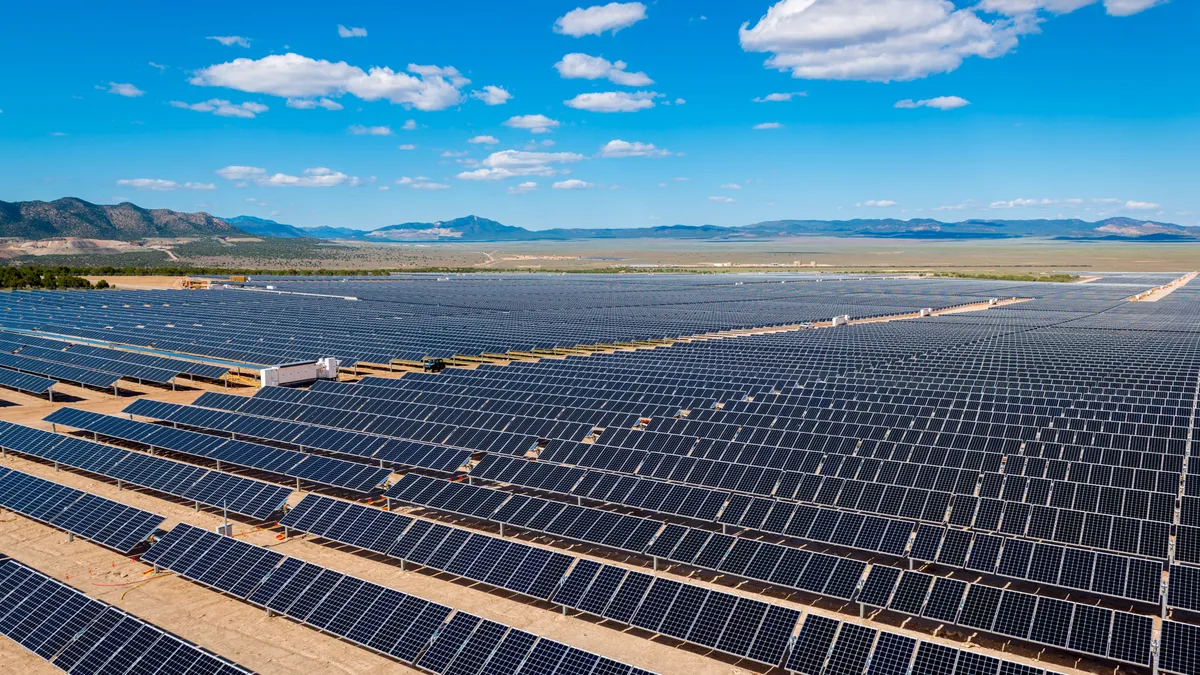Dive Brief:
- The total amount of solar energy consumed in the United States rose from 42 trillion Btu in May 2015 to 56 trillion Btu in May 2016, and accounted for 6% of U.S. total renewable energy consumption.
- The U.S. Energy Information Administration has begun including estimates of small-scale, distributed solar generation in its Monthly Energy Review, which now make up 30% of the country's total solar generation.
- Renewables, including large hydro projects, now account for 12% of U.S. total energy consumption.
Dive Insight:
Renewable generation is slowly, but surely rising and now the latest Monthly Power report from the EIA illustrates how big a part small-scale solar is playing in the current energy landscape.
Distributed facilities now compose roughly 30% of U.S. total solar electricity generation, with utility-scale facilities making up the balance. Of that distributed solar energy, 68% was consumed by the residential sector, 25% by the commercial sector, and 7% by the industrial sector.
In EIA's most recent Short Term Energy Outlook, the agency said it expects renewables used in the electric power sector to increase by 10.5% in 2016 and by 4.3% in 2017. Hydropower is expected to increase by 7.8% in 2016 and then fall by 2% in 2017. EIA predicts consumption of renewable energy other than hydropower in the electric power sector is forecast to grow by 12.9% in 2016 and by 9.6% in 2017.
Utility-scale solar capacity will grow by 8 GW this year, and by 5.3 GW in 2017, according to an EIA forecast. States leading in utility-scale solar capacity additions are California, Nevada, North Carolina, Texas, and Georgia. Utility-scale solar generation is expected to average 1% of total U.S. electricity generation in 2017.
U.S. wind capacity totaled 72.5 GW at the end of 2015, more than five times the amount of solar capacity. Wind capacity is expected to increase by 7.5 GW in 2016 and by 8.5 GW 2017. "Forecast wind generation accounts for almost 6% of total generation next year," EIA said.















